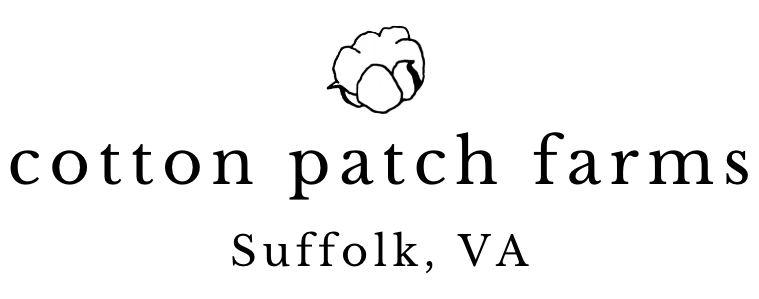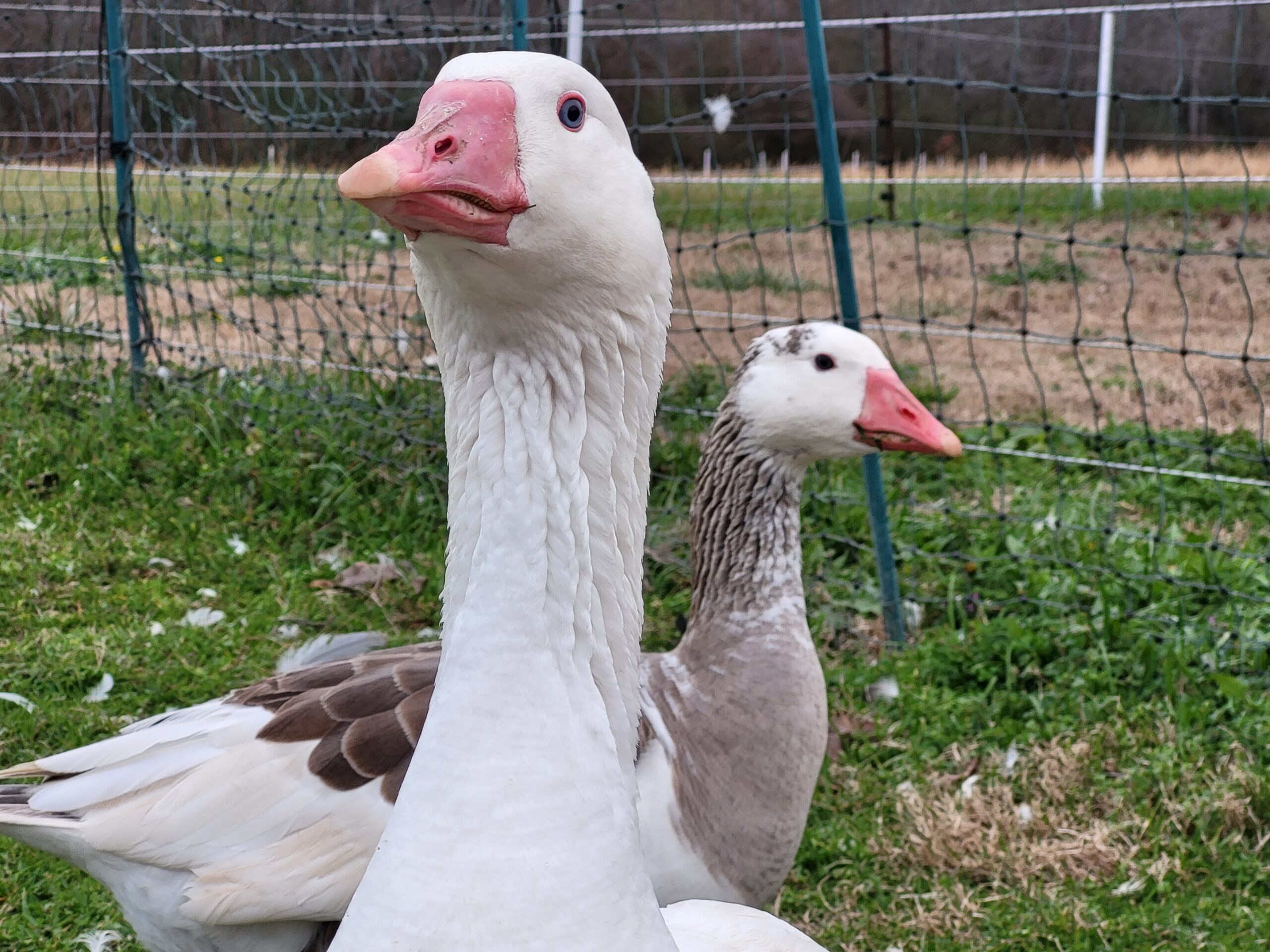Spring is coming, and “chick fever” season is on its way! Before you fall prey to the temptations of a local farm store or a hatchery catalog, we’d like to introduce you to one of our favorite heritage breeds, the Cotton Patch goose. These mild-mannered geese are real gems on our farm, and we think that they deserve a place in every American barnyard.
The Cotton Patch Goose: history and heritage
If you think about domestic birds throughout history, the goose may stand out as one of the highlights. Geese are unlike most other domestic birds in that they are grazers, able to subsist and thrive on a diet that mainly consists of greenery and forage. You may have heard that geese were used to weed small plants out of mature gardens, or that geese were a valuable source of meat and grease. This is all true, and this is no doubt why people kept flocks of geese. But what’s the history of the Cotton Patch breed?
Well, as far as heritage goose historians can piece together, the Cotton Patch goose is an old American breed. This quote from the breed’s page on the Livestock Conservancy website sums it up: “The Cotton Patch goose is the remaining relic of a little-known American breed with parent stock that likely shares common ancestors with other sex-linked breeds.” As we understand it, the Cotton Patch breed used to be a staple mainly in the Southeastern US, a homestead goose with distinct traits and practical value. Unfortunately, flocks were few and far between by the 1950s. Restoration breeders Mark See and Tom Walker traveled far and wide to find birds from flocks that had been with families for generations and weren’t diluted with other breeds. Nowadays, the Cotton Patch goose is listed as Threatened, with the poultry census in 2021 finding approximately 950 birds. This heritage goose breed is finally finding its way back into American barnyards again.
The Cotton Patch Goose: breed traits
The Cotton Patch goose is a landrace breed. What does this mean? A landrace breed is not a “created breed,” but one that has adapted through the effects of geographical isolation to suit a particular purpose. Its history is just as important as its outward appearance. They are generally somewhat variable in appearance but easily recognizable as the same animal.
The most obvious physical trait of the Cotton Patch breed is strong sexual dimorphism, which means that male and female birds have distinct appearances. Adult females have dilute gray areas on their bodies. These gray areas can cover most of the body and/or form a saddleback pattern. Adult males are white, sometimes with scattered gray feathers. The genotype of each bird is readily apparent at hatch, and newly-hatched male goslings are especially important to observe, as their mature feathers will hide their genotype. The breed’s strong sexual dimorphism is apparent from hatch as well. Cotton Patch geese have pink or pinkish-orange bills and feet. The breed is very sleek and trim, with adult weights ranging from 8 – 12 lbs. Its slight size has allowed it to flourish in hot, humid conditions. It is also capable of flight, which has also allowed it to escape predators that a heavier goose could not.
It is worth noting that as the Cotton Patch goose is a landrace breed, many breeders prioritize heritage traits like self-sufficiency. On our farm, our geese hatch and raise their own goslings. We do our best to keep our geese well-fed and protected, but it is up to them to flourish here. We appreciate the heritage of the breed and do not want to take away from its history. We want the Cotton Patch breed to be free to thrive for future generations.
The Cotton Patch Goose: is it the breed for you?
By now, you’ve probably considered the history and the overall appearance of our favorite goose breed. But we haven’t given you some crucial information: what’s it like to live with these geese?
We’re happy to say that our Cotton Patch Farms geese are very mild. We’ve never been threatened or rushed at (we have been hissed at, but only when there are babies and even then the parents are not aggressive). Geese are loud when they talk, but for the most part, ours are quiet unless there’s something exciting like fresh pasture or a scary bird flying overhead. The only real issue we would expect them to cause in a barnyard is when other birds are mating, which is something that geese can like to break up. They also can fly out of most fencing if they want to. We’ve found that generally they are more likely to fly back into their pen than out of it, but we keep their wings clipped since they are quite valuable to us. We’re happy to say that our adults have been models of good health and (unlike yours truly) completely resilient in the summer heat.
One thing that geese love is grass and all things green. If you would like help with mowing, they are always happy to oblige. Unlike chickens and other poultry, geese have little interest in bugs and they will not scratch the ground up or spill feed. There are ups and downs, of course. While they don’t move dirt, they will splash their fair share of water during bath time. They are known to do a bit of chewing on their surroundings when there isn’t enough forage to satisfy them. Geese can get into trouble, just often not as much as other birds.
Geese are seasonal layers that produce a small amount of large, nutritious eggs (one goose egg is equivalent to three chicken eggs!) every spring. While seasonal laying means that they don’t produce eggs year-round, this can be a blessing to the small homestead that doesn’t want to be overrun by a multitude of baby birds. Geese tend to be extremely caring parents that do an excellent job of raising their young. When combined with their long life expectancy of 20 years, it’s easy to see why the addition of a good goose breed can be such a valuable addition to a homestead.
We really can’t say if this is the breed for you, but we know it’s the breed for us. Watching our geese hatch out soft, fluffy, plump little goslings each spring, watching them teach their offspring what to eat and what to avoid, watching it all happen on our pasture, and knowing that the cycle can repeat for generations . . . some people call them the perfect homesteading goose. We can’t disagree.
The Cotton Patch Goose: more links
The 10 Heritage Breeds forever stamps collection, which featured the Cotton Patch goose and nine other heritage American breeds, was voted the favorite stamp collection of 2021.
The Cotton Patch is one of just three goose breeds that are listed on the Slow Food Ark of Taste.
The Livestock Conservancy group, called the American Minor Breeds Conservancy back when conservation work of the CPG breed began.
An article about conservation work with the CPG and the networking value of social media, by Denise Colombe-Frye.
Cotton Patch Goose Society, the Facebook group for Cotton Patch breeders (and an excellent source of information).
Our Cotton Patch goose waitlist, in case you are local to Suffolk, Virginia and ready to add this special breed to your farm.


